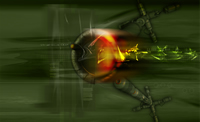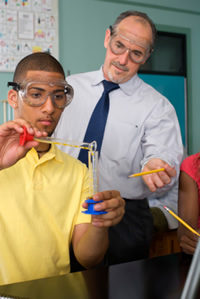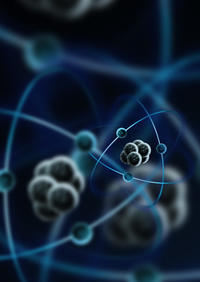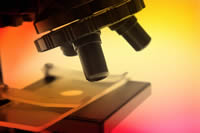Biology: Course Syllabus
Course Code: SCB4010T
Welcome to the DoDEA Virtual High School. Thank you for visiting our course catalog. Please navigate through the syllabus below to find out more information about this DVHS online course. If you have questions, please contact us at your earliest convenience.
Course Description
 This course is an introduction to general biology and scientific inquiry. It will include the fundamental principles of living organisms, including physical and chemical properties of life, cellular organization and function, the transfer of energy through metabolic systems, cellular reproduction, the classification of living things, and the six kingdoms of life. The main focus is to present biological information in an understandable and straightforward way that will capture the students’ interest and deal with current issues and concepts.
This course is an introduction to general biology and scientific inquiry. It will include the fundamental principles of living organisms, including physical and chemical properties of life, cellular organization and function, the transfer of energy through metabolic systems, cellular reproduction, the classification of living things, and the six kingdoms of life. The main focus is to present biological information in an understandable and straightforward way that will capture the students’ interest and deal with current issues and concepts.
Image: Abstract background of an organism; ThinkStock.com
Objectives
Upon completion of Biology, students should be able to:
 Engage in full and partial scientific inquiries to design, conduct, and communicate scientific investigations to explore ideas about the natural world.
Engage in full and partial scientific inquiries to design, conduct, and communicate scientific investigations to explore ideas about the natural world. - Use scientific inquiry to design and conduct scientific investigations to meet a human need, make a decision, solve a human problem, or develop a product.
- Recognize and describe the interrelationship between science and technology.
- Apply the tools of technology (e.g., computers) in scientific endeavors.
- Identify qualities inherent in scientific behavior (e.g., reasoning, insight, energy, skill, and creativity).
- Discuss contributions of men and women of various social and ethnic backgrounds to science and technology.
- Apply science concepts to make decisions (weighing risks and benefits) about students' personal health and well-being.
- Understand that the cell is the basic unit of structure and function in living organisms.
- Know that characteristics of organisms are specified in DNA, and changes in DNA lead to variation.
- Explain that species evolve over time through the process of natural selection.
- Describe how ecosystems are interactions of organisms with biotic and abiotic factors in the environment.
- Identify that living organisms are complex and highly organized, requiring energy and matter to maintain this organization.
DoDEA Biology Standards may be viewed by clicking the link.
Image: A teacher helping a student conduct a science experiment; ThinkStock.com
Course Outline First Semester
 THE NATURE OF SCIENCE & BIOLOGY
THE NATURE OF SCIENCE & BIOLOGY
Section 1: Introduction to Biology
Section 2: The Chemistry of Life
PHOTOSYNTHESIS
Section 1: Biochemical Reactions: Energy and Enzymes
Section 2: Photosynthesis
Section 3: Cellular Respiration
CELL STRUCTURE
Section 1: Cell Structure
Section 2: The Cell Membrane
Section 3: Chromosomes and Cell Reproduction
Section 4: Meiosis and Sexual Reproduction
GENETICS
Section 1: Mendel and Heredity
Section 2: The Chromosome Theory of Inheritance
Section 3: Human Genetic Traits
Section 4: DNA
Section 5: Protein Synthesis
Section 6: Biotechnology and the Genetics Revolution
EVOLUTION
Section 1: Descent with Modification
Section 2: Population Genetics
Image: Double helix and microscope; ThinkStock .com
Course Outline Second Semester
 HISTORY OF LIFE
HISTORY OF LIFE
Section 1 – Fossils and The Geologic Time Scale
Section 2 – The Precambrian
Section 3 – The Paleozoic Era: The Time of Ancient Life
Section 4 - The Mesozoic Era: The Age of Dinosaurs
Section 5 - The Cenozoic Era: The Age of Mammals and Birds
BIOLOGICAL DIVERSITY & CLASSIFICATION
Section 1 – Taxonomy
Section 2 – Prokaryotes
Section 3 – The Protista
Section 4 – The Plant Kingdom
Section 5 - Kingdom Fungi
Section 6 & 7 - Kingdom Animalia
PLANT STRUCTURE
Section 1 – Plant Organs, Tissues, and Cells
Section 2 – Flowering Plant Reproduction
Section 3 – Plant Hormones, Nutrition, and Transport
ANIMAL ORGANIZATION
Section 1 – Animal Tissues
Section 2 – Animal Organ Systems and Homeostasis
Section 3 – The Integumentary System: Protection & Senses
Section 4 – The Circulatory System: Transport of Materials within the Body
Section 5 – The Lymphatic System and Immunity: The Body's Defense
Section 6 - The Digestive System: Getting Food and Nutrients into the Body
Section 7 - The Nervous and Endocrine Systems: Control of the Body
Section 8 - The Muscular and Skeletal Systems
Section 9 - The Respiratory and Excretory Systems: Exchange of Materials
Section 10 - The Reproductive System and Human Development
POPULATION ECOLOGY
Section 1 – Population Growth
Section 2 – Community & Ecosystem Dynamics
Section 3 – The Biosphere and Mass Extinctions
Image: An impression of a atom with electrons; Shutterstock.com
 Required Materials
Required Materials
Textbook
Holt Biology; Johnson-Raven
ISBN Number (Student Edition) H66473-X
Publisher: Hartcourt/Holt Rinehart Winston

